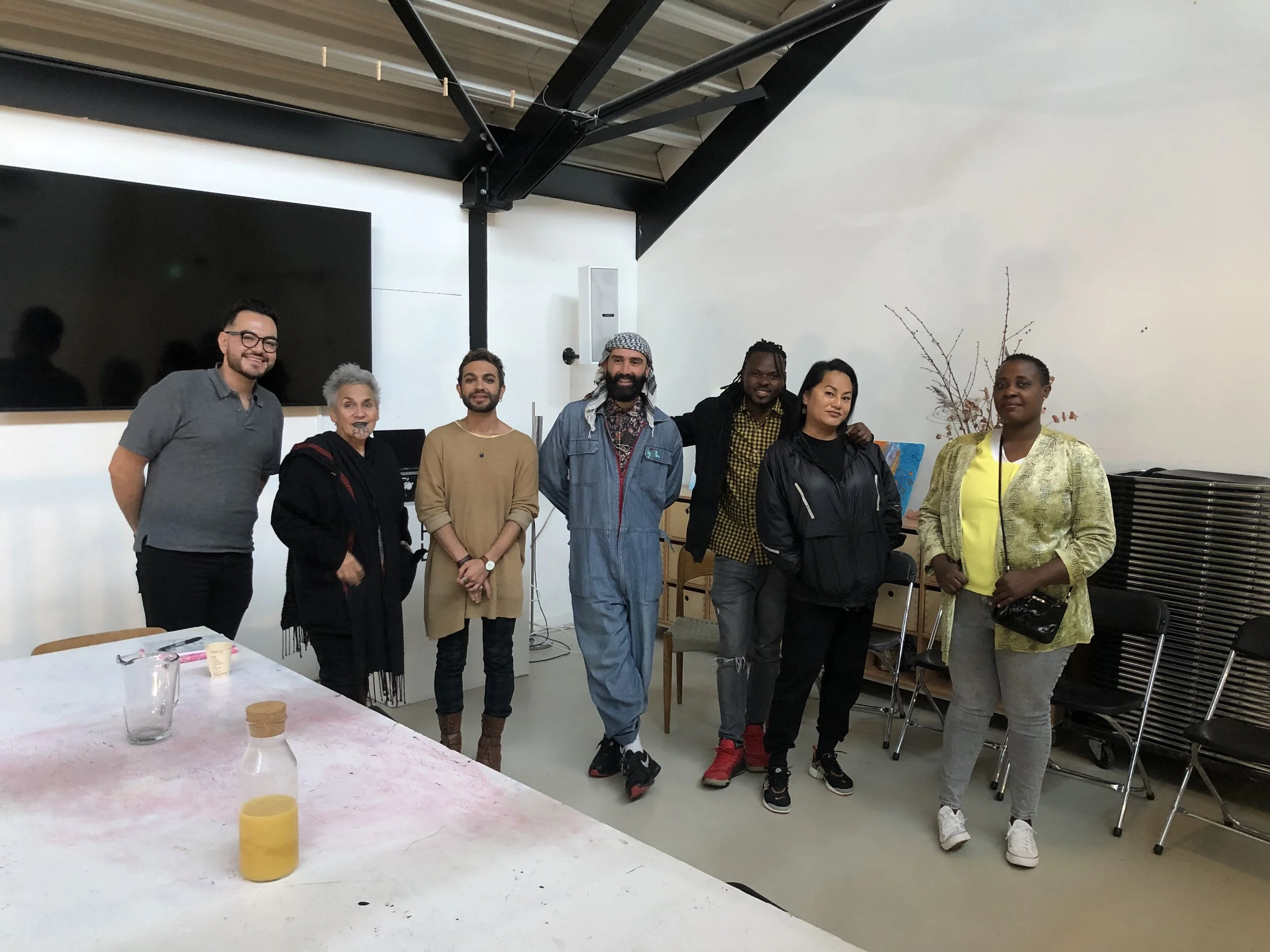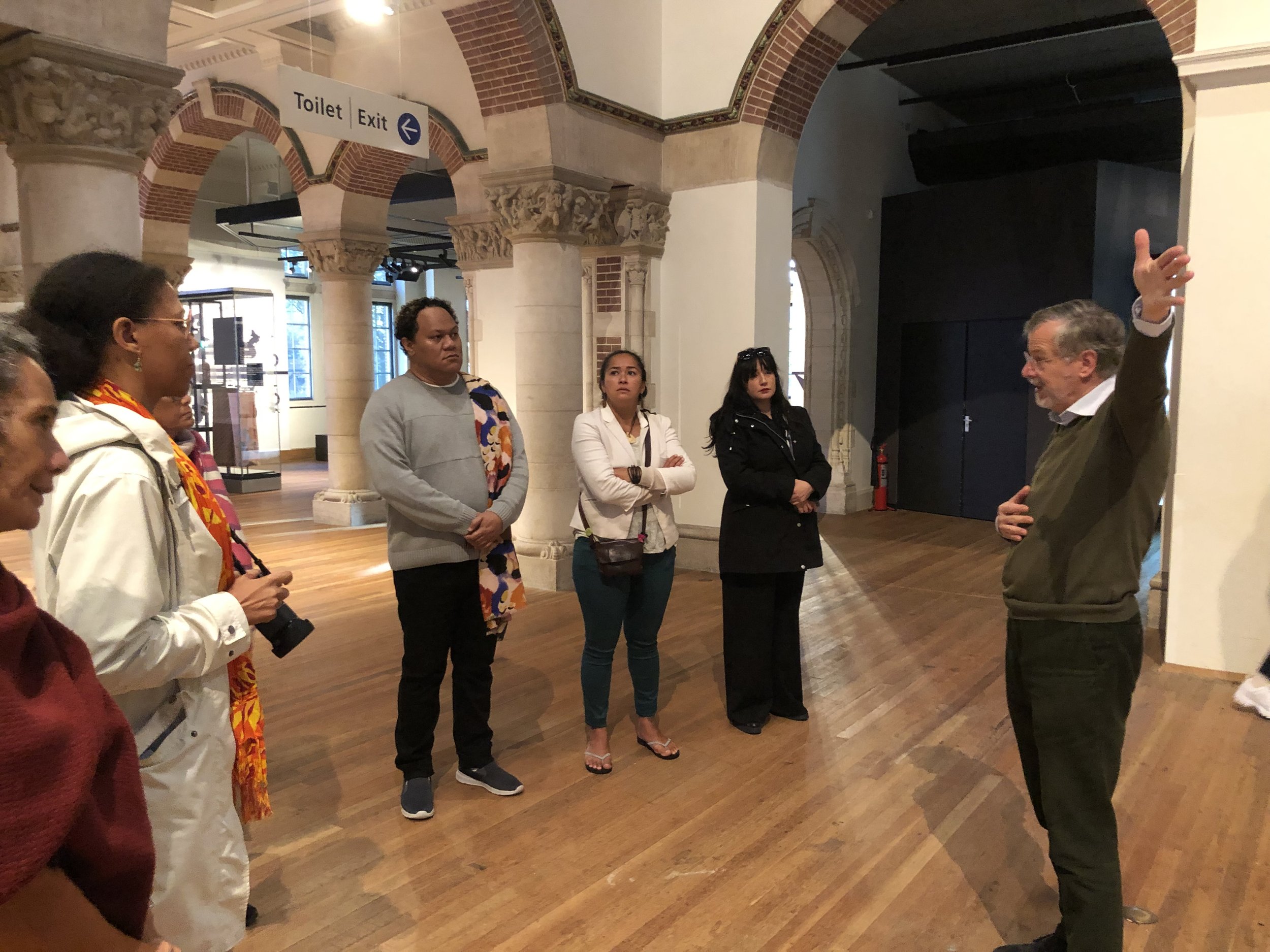The National Museum of World Cultures, an umbrella organisation comprising the Tropenmuseum in Amsterdam, the Museum Volkenkunde in Leiden and the Afrika Museum in Berg en Dal was happy to welcome Talanoa Forum in the Netherlands. This intimate gathering followed an online Talanoa Forum as well as the in-person Talanoa Forum in Venice. Artists, curators, scholars, activists, community leaders and policymakers from Aotearoa New Zealand (Emeritus professor Ngahuia Te Awekotuku and Eve Barlow), Sāmoa (Yuki Kihara and Alex Su’a), Tahiti (Miriama Bono and Chantal Spitz) and the Marquesas (Tahia Falchetto) went into a series of talanoa with people living in the Netherlands. Many of the conversations centred around the museum and its societal role.
Sunday 16 October 2022 | Talanoa Forum with LIMBO – Queer Lives
Photo: Yuki Kihara.
The Talanoa Forum was the guest of Framer Framed, a platform for contemporary art, visual culture and critical theory and practice. The participants could see the exhibition by artist Gluklya, To those who have no time to play, which was followed by a conversation between LIMBO and the Talanoa speakers around the theme of ‘Queer Lives’.
LIMBO is a creative research collaboration between Framer Framed, Refugee Academy (Vrije Universiteit Amsterdam), Choices Support Center and queer/refugee/migrant community organisers and artists. During the exchange, Yuki Kihara discussed how through her art practice she addresses queer Sāmoan lives. Emeritus professor Ngahuia Te Awekotuku talked about queer lives in Aotearoa New Zealand while the lawyer Alex Su‘a as a ‘proud fa‘afafine’ explained all the work that is involved in being the president of the Sāmoan Fafa‘afine Society. Chantal Spitz read a few translations of her novel written in French. The members of LIMBO addressed their art practice that is also reliant on supporting each other and letting emotions be present in order to construct a home, a place where one feels safe and happy.
https://framerframed.nl/en/projecten/talanoa-forum-swimming-against-the-tide/er Framed
Monday 17 October 2022 | Visit to the collection depot
Photo: Yuki Kihara.
The speakers of the Talanoa Forum visited the collection depot of the Museum Volkenkunde, which is situated in ‘s-Gravenzande. The Oceania collection of the National Museum of World Cultures comprises about 75,000 objects of which 50,000 originate from the western part of New Guinea. The collection management team had pulled out objects for the members of the group so they could all take a closer look at the items. The participants also had the opportunity to walk among the shelves and ask for other objects than the primary selection to be pulled out and examined.
A few pieces really stood out, including a Marquesan double headdress made out of black rooster feathers, barkcloth dance costumes from Tahiti dating to the late nineteenth century, Māori treasure boxes and beautiful male and female weapons, and a tuiga, a Sāmoan ceremonial headdress,. This collection visit was emotional at times. However, it also demonstrated that even though the Polynesian collection is not as large as the western New Guinea collections, the objects are significant through their collection history and intrinsic quality.
The collection website: https://collectie.wereldculturen.nl/
Tuesday 18 October 2022 | Visit to 'Our colonial inheritance' in Tropenmuseum, Amsterdam
Photo: Yuki Kihara.
Pim Westerkamp, curator Southeast Asia, guided the participants through the exhibition Our Colonial Inheritance, which opened in June 2022. The exhibition looks at the Dutch colonial history and presence in Indonesia, Suriname, Curaçao, Sint Maarten and many other countries. It aims at showing how colonialism shaped the world of today, and how people endured colonialism. How did people try to create their own lives? How did they rebel or remain in charge? These stories are told through a multivocal perspective, in which historical objects, contemporary art, exhibition texts and audio-elements strengthen each other. After the exhibition visit, there was time to exchange ideas about the weaknesses and strengths of the exhibition.
https://www.tropenmuseum.nl/en/whats-on/exhibitions/our-colonial-inheritance
In the afternoon Isabelle Best, intern at the National Museum of World Cultures, discussed her work in relation to the representation of Indigenous peoples in Our Colonial Inheritance, and in the museum more widely. Wonu Veys gave a short presentation about ongoing collaborations with people of Papuan descent in the Netherlands and beyond. This led to a lively discussion where also visitors participated in.
Wednesday 19 October 2022 | Visit to Museum Volkenkunde's Oceania gallery in Leiden
Photo: Tahia Falchetto.
The Talanoa Forum in the Netherlands was concluded by a visit to the Oceania gallery at the Museum Volkenkunde in Leiden. The group also had the opportunity to visit the small Rapa Nui exhibition entitled Easter Island – Treasures from the depot. This exhibition features the small but significant collection from Rapa Nui with special attention paid to the fibre arts of the island. The museum also shows fifty works of contemporary Aboriginal art that were formerly part of the AAMU collection in Utrecht. The whole collection was donated to the National Museum of World Cultures when the AAMU could no longer remain open.
Permanent display Oceania - https://www.volkenkunde.nl/en/whats-on-0/exhibitions/oceania
Treasures from the depot: Easter Island - https://www.volkenkunde.nl/nl/zien-en-doen/tentoonstellingen/schatten-uit-het-depot-paaseiland
Australian Art - https://www.volkenkunde.nl/en/whats-on-0/exhibitions/australian-art
The display in Leiden has not changed significantly since the museum was inaugurated in 2000 with completely new aesthetic displays and touch screens. While the collection is impressive, some of the displays could do with an update. This was the focus of the discussion in the afternoon. The following questions came up during the discussions: what are the pros and cons of thematic versus regional displays, permanent versus temporary exhibitions? How can museums like ours avoid only looking at ‘the other’ and not include ourselves? How can museums normalise things that are outside the white, able-bodied and cisgendered people? How can museums help to connect people to some of their ancestral objects?



